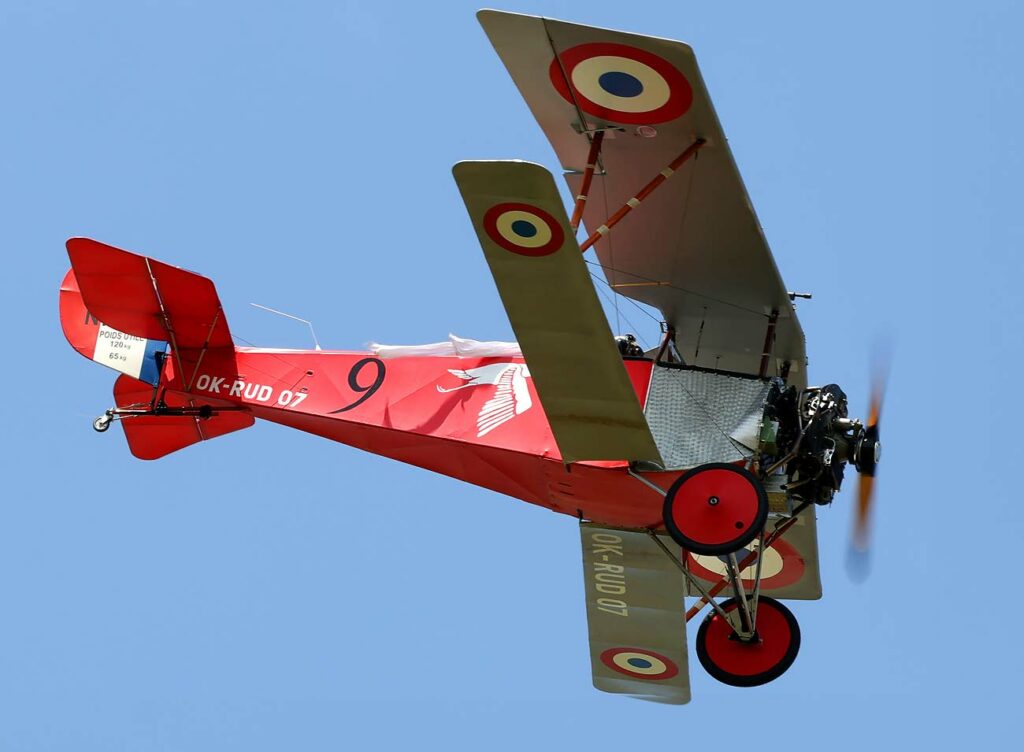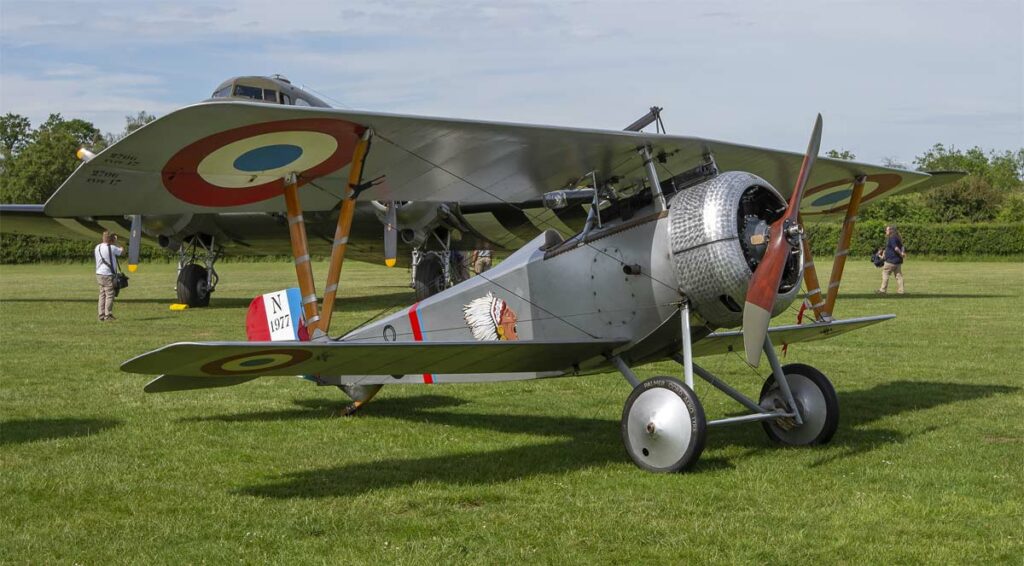The Nieuport 17 was a World War I-era French biplane fighter aircraft renowned for its agility and remarkable combat performance. This article explores the history, design, performance, military use, and combat effectiveness of the Nieuport 17, shedding light on its significance in aviation history.
In the tumultuous period of World War I, the need for nimble and effective fighter aircraft became paramount. The Nieuport 17 emerged as a crucial response to this need. Launched in 1916 by the French aircraft manufacturer Nieuport, this innovative fighter aircraft aimed to combat the ever-evolving air threats that characterized the era. The Nieuport 17 made its maiden flight in early 1916 and quickly earned recognition for its prowess in the air.

Design of the Nieuport 17:
The Nieuport 17 featured a sleek and compact design. Its wingspan measured 8.16 meters (26 feet 9 inches), and it had a length of 5.80 meters (19 feet). This lightweight aircraft weighed approximately 490 kilograms (1,080 pounds). The Nieuport 17’s key advantage was its exceptional agility, thanks to its compact size and innovative wing design.
The aircraft’s structure comprised a wooden monocoque fuselage and a robust fabric covering, keeping weight to a minimum. The design incorporated a rotary engine, which was common during World War I. The Nieuport 17 also introduced an innovative V-shaped interplane strut design, reducing drag and enhancing maneuverability.
However, this design did come with drawbacks, primarily related to the engine. The rotary engine’s reliability and overheating issues were notable concerns. Despite these challenges, the Nieuport 17’s design contributed significantly to its agility and overall combat effectiveness.
Performance of the Nieuport 17:
Powered by a Gnome Monosoupape 9N rotary engine, the Nieuport 17 delivered 110 horsepower, allowing it to reach a top speed of around 176 kilometers per hour (109 miles per hour). It could climb to an altitude of approximately 5,500 meters (18,045 feet) and had a range of about 185 kilometers (115 miles).
The Nieuport 17’s performance was indeed impressive for its time, making it a formidable contender in aerial combat. Its agility, speed, and climb rate outperformed many of its contemporaries, such as the Fokker Eindecker series and the Albatros D.III.

Military Use and Combat of the Nieuport 17:
The Nieuport 17 played a pivotal role in World War I, serving primarily with the French, British, and Belgian air forces. Its armament typically included a single 0.303-inch Lewis machine gun, synchronized to fire through the propeller arc. This provided the pilot with a forward-facing offensive capability.
The aircraft saw action in numerous air operations during the war, engaging in dogfights against German fighters like the Albatros and Halberstadt series. It was highly regarded for its maneuverability and was employed in various roles, including aerial reconnaissance and artillery spotting.
As the conflict progressed, newer and more advanced aircraft designs began to replace the Nieuport 17, such as the SPAD S.VII and the Sopwith Camel. Nevertheless, the Nieuport 17’s legacy endured, and some units continued to use it post-war in a training capacity.
While it was eventually phased out of active combat duty, the Nieuport 17’s impact on aviation design and tactics was profound, influencing the development of subsequent fighter aircraft.
The Nieuport 17 remains an iconic symbol of early 20th-century aviation innovation and combat prowess. Its agile design and impressive performance in the turbulent skies of World War I contributed significantly to the evolution of fighter aircraft. Though it has since been retired from active service, the Nieuport 17’s legacy endures in the annals of aviation history, forever remembered as a formidable fighter of its era.
Back to the Warbirds section.